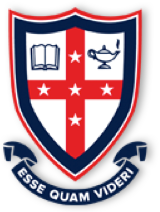Stories
John Montefiore (OC 1953), Artist
John Montefiore (1936–2011) was one of the star students of acclaimed artist and Art Master at Cranbrook, Justin O’Brien (as to whom, see a profile here). Affectionately known as "Monty", John Montefiore attended Cranbrook from 1946 to 1953.
His paintings “invariably occupied pride of place” in the art exhibitions organised by the Art Master for Speech Day and were displayed on the walls of the Perkins Building.1 Monty’s evident skill and talent were honed by scenery painting for the Dramatic Society, and he was awarded special art prizes on Speech Day in successive years, from 1951 to 1953. In his final year at Cranbrook, Montefiore also won the Senior Art Prize.
Monty came to Cranbrook in the same year that Justin O’Brien arrived, and it was the start of a fruitful teacher–student relationship which would ultimately encourage Montefiore’s desire to become an artist. Working closely amongst a talented group of art students at Cranbrook, Justin O’Brien became Monty’s mentor.
O’Brien had an extensive knowledge of Italian Renaissance and Biblical art and much of his own work used religious motifs. He received great acclaim including winning the inaugural Black Prize for Religious Art in 1951 for his triptych, The Virgin Enthroned. The Vatican acquired another of O’Brien’s religious-style works, entitled The Raising of Lazarus. Justin O’Brien’s “exuberant depictions” of religious themes had a profound effect on Monty, who would later, in 1977, paint an extremely large chapel altar piece for Christ Church Cathedral in Newcastle, New South Wales.2
Montefiore and O’Brien would also remain friends and colleagues, with Justin O’Brien painting a portrait of Montefiore in 1957, entitled Man in a Red Shirt, which was painted in the style of a Renaissance Florentine portrait from the fifteenth century.
Monty would go on to study at the National Art School in Sydney, before travelling to London on a New South Wales Travelling Art Scholarship to study European art. When he returned to Australia he taught art during the 1970s while continuing to pursue his own career as an artist.
He proved to be a constructive teacher, having been described by a former student as his “most insightful critic”, who was always interested in “the full potential of the work” and who could see the work in terms of the student’s intention and not his own.3 By the late 1980s, Montefiore had seven solo exhibitions under his belt, “all of them well received”.4 By 2005, he had held 18 solo exhibitions in 10 galleries in Sydney, Newcastle and Wollongong, “and his paintings were represented in sixteen selected major group exhibitions, including three times in the Art Gallery of New South Wales”.5
During the 1990s, Montefiore began devoting himself to art exclusively, living “the life of a modern-day artist monk”.6 In 1992, he was able to finish his largest work, an 18-metre high multi-pannelled work called Life Series, which won the coveted Sulman Prize in 1993 and which now sits on permanent display at Macquarie University.
- 1. Malcolm Dan, “John Montefiore (1936–2011), at Cranbrook 1946–1953”, in The Old Cranbrookian, June 2001, p. 32.
- 2. Loc. cit.; Mark Juddery, “Profound painter and teacher”, Sydney Morning Herald, 16 June 2011.
- 3. Juddery, “Profound painter and teacher”, op. cit.
- 4. Ibid.
- 5. Dan, “John Montefiore (1936–2011), at Cranbrook 1946–1953”, op. cit., p. 33.
- 6. Juddery, “Profound painter and teacher”, op. cit.

